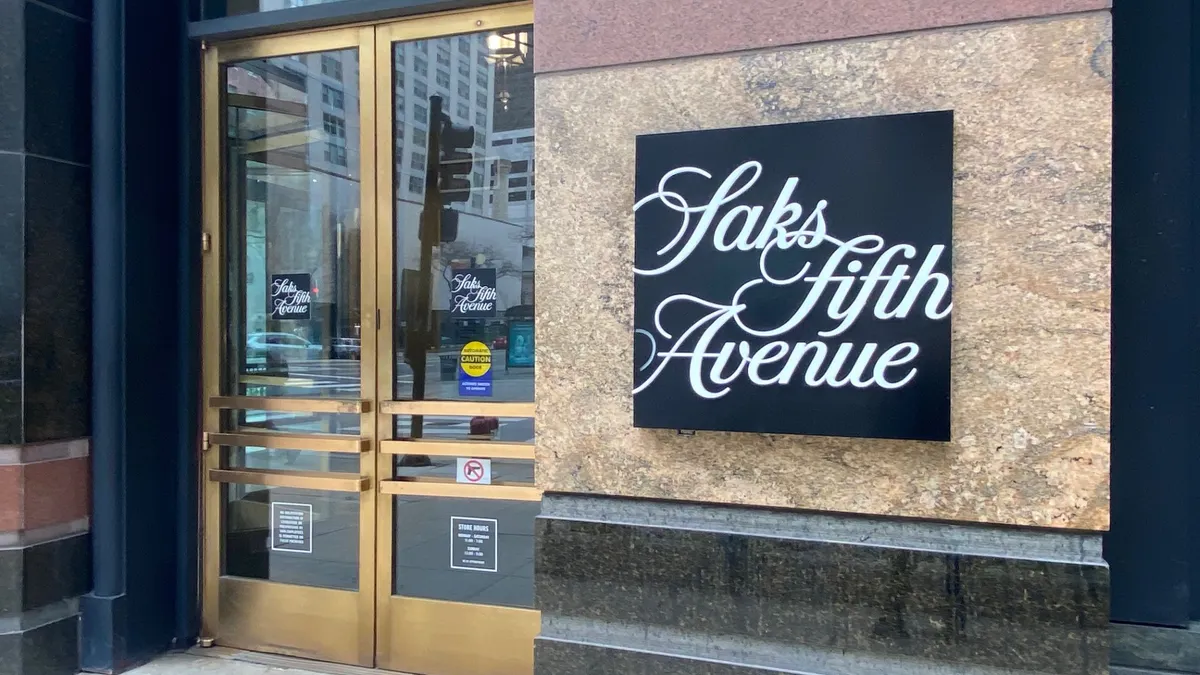As Macy’s, Kohl’s and J.C. Penney grapple with what success means for a mid-tier department store in the 21st century — fending off activist investors, taking on new owners or announcing new strategies — Southern department store chain Dillard’s quietly plugs along.
The company grabbed 0.4% of market share in the second quarter compared to other department stores, according to research from M Science, though it isn’t immune to the downturn in discretionary spending that several retailers have observed in recent weeks. In its latest quarter, revenue barely budged year over year, store comps were flat and women’s apparel sales were weak. Unlike fellow publicly traded department stores Kohl’s and Macy’s, which both lowered their expectations for 2022, Dillard’s doesn’t provide earnings guidance, though UBS analysts expect its sales, margins and profits to decline in the second half of the year. Still, other analysts see some strength in the 84-year-old regional retailer compared to its peers.
“Our sense is that Dillard’s will see a much softer landing than some other players like Macy’s and Kohl’s,” GlobalData Managing Director Neil Saunders said in emailed comments, noting that Dillard’s customer base is older and wealthier and therefore somewhat less affected by inflation. “Even so, slowdowns in more marginal customer groups and a more cautious mindset among almost all shoppers are starting to catch up with Dillard’s and we believe the company is now entering a softer period of growth.”
All in the family
In the past few years, Macy’s and Kohl’s have tussled with activist investors who pressured them to look into monetizing their real estate, spinning off their e-commerce operations, or, in the case of Kohl’s, shaking up the board and even putting the business up for sale. J.C. Penney, meanwhile, is now owned by two of its landlords after declaring bankruptcy in 2020.
By contrast, at Dillard’s, the founder’s son leads the company, with the help of other family members employed there, and they’re firmly in control of the company’s class B stock and board. Indeed, despite being a public company, Dillard’s in many ways remains a family-run business. CEO William Dillard, who worked at his father’s store as a child, has been in the C-suite since the late 1970s, when he became chief operating officer; he took the helm as chief executive two decades later, according to a 2016 video profile presented by the University of Arkansas Business School.
“We are one of a very few remaining retailers with the founding family still at the helm and we are super proud of that,” Corporate Spokesperson Julie Johnson Guymon said by email. “They are all very much engaged in the day-to-day operations of Dillard’s and are quite visible throughout the company. The leadership and experience of the Dillard family has seen this company through eight decades of tremendous challenges and extraordinary success. Lately, its been extraordinary success.”
The department store does have its own issues with sometimes messy or “fusty” stores, but its shopkeeping standards are superior to many rival department stores, according to GlobalData’s Saunders. “They are pleasant to shop and customer service is very good,” he said by email. “I think because it is family run they try to keep on top of traditional retail values.”
What Dillard’s has
Macy’s, Kohl’s and J.C. Penney are all working hard to revamp their private labels — an effort to reap the wider margins of owned brands and differentiate their merchandise — with mixed results.
Macy’s and Penney have gone so far as poaching former Target executives to lead those efforts, a nod to the mass merchant’s prowess in the space. But perhaps they should be hiring from Dillard’s. The department store boasts 52 owned brands or exclusive brand partnerships in women’s, men’s, children’s and home; its largest private women’s apparel, footwear and accessories label, Antonio Melani, has its own Instagram page and regularly releases its own designer collaborations and capsule collections. Moreover, strong brands like Pendleton that are difficult to find elsewhere are found at Dillard’s, according to Saunders.
The retailer over a decade ago decided to move upmarket and focus on fashion; last year, its private labels accounted for 23% of its sales, according to Guymon. The retailer works with outside and in-house designers and more recently with social media influencers to develop and market these items.
”We realized that traditional department stores pretty much all looked the same,” Guymon said. “We all carried largely the same brands from the same vendors, which led to fighting on price as the only differentiating factor in the customer’s mind. This, to us, is a race to the bottom where nobody wins. We began to reach out to limited distribution, higher profile brands and to reach out to a customer who is more motivated by fashion than by price. This is our place in the market. We get far more excited about fashion and newness than we do over price. The Dillard’s customer is the same way. To give us even more differentiation, we developed our own, exclusive brands.”
If they continue to resonate with customers, Dillard’s private labels have the potential to help it take market share, and their higher margins would help offset what promises to be a promotional environment into next year, according to UBS analysts.
“The most positive thing about Dillard’s brands is that they have been designed with some thought,” Saunders said. “They have a point of view and a handwriting that makes them distinct and targets them at particular groups of consumers. While it can sometimes be argued that Dillard’s has too much stuff, one of the purposes of a good department store is to be an emporium where there are lots of interesting things to look at and discover. Too many others in the space have lost that flair — Dillard’s still retains it and own-brands play a role in this.”
What’s ahead
Dillard’s was once a leader in tech, embracing new digital capabilities from IBM in 1973 for data processing and digital purchase orders, and by the middle 1980s the retailer had the third largest online network in the country, according to William Dillard.
The retailer has been behind in e-commerce, however, which was a problem during the height of the pandemic.
“We improved this capability tremendously during the pandemic and we continue to make enhancements to the whole eComm experience at Dillard’s,” Guymon said.
Indeed, its online sales relative to physical-store sales are now growing, at a time when other department stores’ online sales are retreating as shoppers return to stores, according to research from M Science Senior Analyst Matthew Jacob. This could enable the retailer to reach younger customers, he said.
“We survived the pandemic and came out even stronger because of sound decisions made over eight decades of experience.”

Julie Johnson Guymon
Spokesperson, Dillard's
“I think they are benefiting probably because they are located more in the South and that has typically done pretty well,” he said by phone. “But for me, the thing that just jumps out is that online performance.”
The retailer does need to reach more younger shoppers, Saunders said. Guymon said it has, with the third generation of the Dillard family responsible for connecting with new, younger-focused brands and engaging with customers and tastemakers on social media.
The company’s conservative financial policy has also paid off. “We survived the pandemic and came out even stronger because of sound decisions made over eight decades of experience,” Guymon said.
The department store must maintain such newfound energy in merchandising and services and that momentum coming out of the pandemic, Saunders said. In the end, the best way to modernize the department store model may be to upgrade its own stores, assortments and services, rather than be content to compare well against rivals.
“If it can accomplish these things, while performance may return to more normalized levels, Dillard’s will avoid falling back into being a low-energy, rather uninspiring retailer,” Saunders said.





















